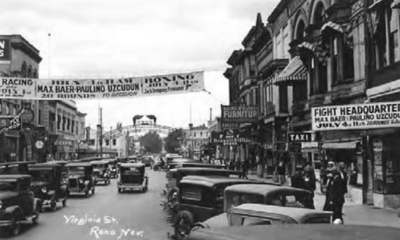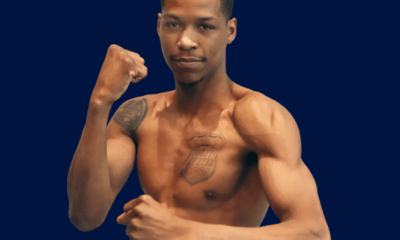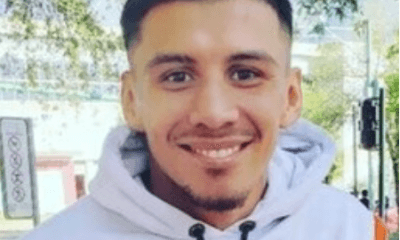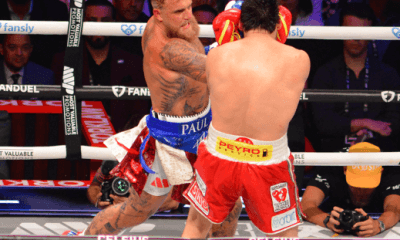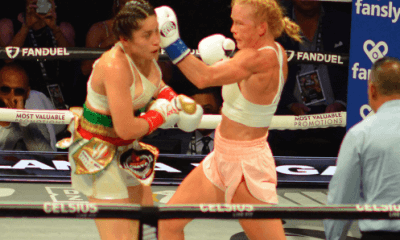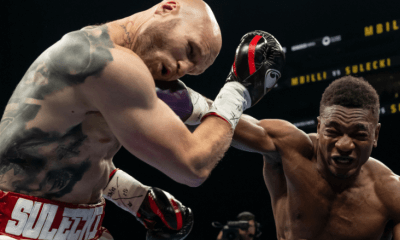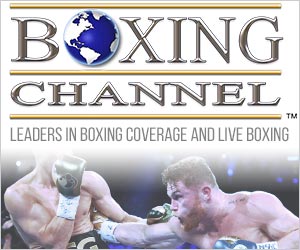Featured Articles
The Hauser Report: The DAZN Experiment
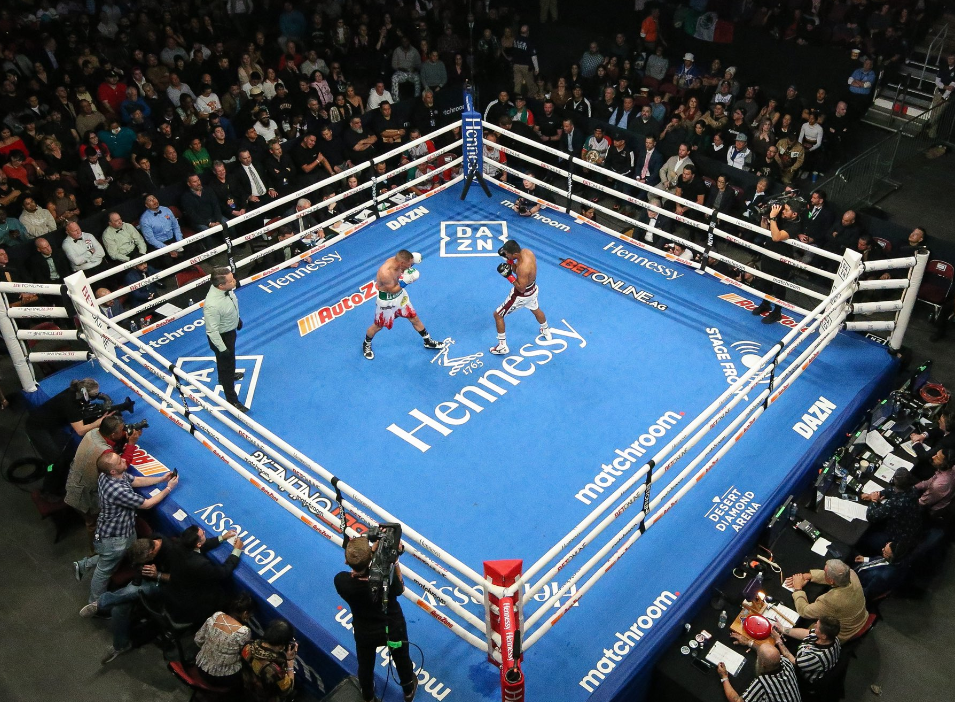
On March 3, 2023, I posted an article on The Sweet Science entitled “DAZN: Charging More for Less”. The article criticized DAZN’s boxing programming, its decision to move its most attractive offerings to pay-per-view (where they will no longer be included with the subscription price), and the network’s price increase which raised the cost of an annual subscription from $99.99 to $224.99. The article concluded by stating that I had cancelled my subscription to DAZN.
After cancelling my subscription, I received the expected “we’re sorry you’re leaving” computer-generated emails from DAZN. I also received quite a few emails from readers telling me that they agreed with the position I’d taken and wouldn’t renew their own subscription to DAZN when it expired.
More significantly, I received an email from Fred Mellor (vice president, communications for DAZN). A dialogue with Mellor followed with Fred voicing the view that there was reason for optimism with regard to DAZN’s boxing programming in the months ahead. I responded with a suggestion.
I would make a $225 contribution (the cost of a one-year subscription) to a mutually agreed upon charity. In exchange, DAZN would give me a complimentary one-year subscription. The charitable donation would ensure that there was no intent on my part to hustle DAZN out of $225. And at the same time, I wouldn’t be paying what I felt was an excessive rate for the subscription. Rather, I’d be making a donation to a charity that DAZN and I believed in. I would then take notes on what I watched on DAZN. And at the end of the year, I’d write an article on whether I thought I’d gotten $225 worth of entertainment.
Mellor agreed to the proposal. On March 17, 2023, I sent a check for $225 to the International Boxing Hall of Fame in Canastota and my new subscription to DAZN began. A progress report follows.
On May 10, 2018, promoter Eddie Hearn and Perform Group CEO Simon Denyer announced a joint venture at a press conference in New York. Speaking about what was touted as a one-billion-dollar, eight-year joint licensing agreement to provide content for DAZN, Hearn proclaimed, “We’re here to change the game and elevate boxing to a new level for fight fans in America. We have the dates, the money, and the platform. We were dangerous without this. But with this money and this platform, omigod! We have by far the biggest rights budget in the sport of boxing and we’re going to be ultra-competitive. We’re going to put on the greatest shows with the greatest talent. This is a brand-new era for boxing in the U.S. We’re here and we mean business. We have money never seen before in the sport of boxing. If I fail here, I’m a disgrace.”
Since then, DAZN’s boxing product has been pedestrian. And subscription buys in the United States have been a disappointment. According to Bloomberg, DAZN has lost more than six BILLION dollars since its 2016 launch.
More boxing is available to fight fans on traditional television and streaming outlets now than ever before. But most of it comes with a price tag attached in the form of a monthly subscription fee or one-time pay-per-view buy. The content itself also leaves a lot to be desired.
The biggest problem is that there are too many “A-side vs. B-side” fights.
Suppose you’re in high school. And the two toughest kids in school tell people that they’ve decided to settle their differences by fighting in a vacant lot after classes that day. You’d be inclined to watch it, right?
Now change the paradigm. One of these tough guys announces that he plans to beat up the class nerd after school that day because some other kids paid him to do it. They thought it would be fun to watch. That’s less appealing. Sickening, actually.
The latter scenario is akin to too many fights in boxing today. A-side vs. B-side fights lack drama. DAZN isn’t the only network to televise them. But it might be the worst offender among the major networks and it’s the only network that charges $225 a year (plus a hefty premium for PPV fights) to watch.
HBO at its peak was “the heart and soul of boxing.” DAZN has become “the home of A-side vs. B-side fights.”
To quantify this finding, I tracked the first twelve fight cards streamed by DAZN after my new subscription began. The survey doesn’t include DAZN’s “X Series” or comparable programming. These “trashboxing” cards feature what DAZN calls “crossover boxing talent” like “Fangs vs. Vampira” (two women fighters) and bouts involving a lapsed NFL running back, assorted social influencers, and combatants identified as “Viking, Sharks, Pizza, and YuddyGangTV.”
The survey numbers speak for themselves.
DAZN streamed 68 fights on the twelve fight cards that I tracked. In almost all of them, the A-side fighter was clearly identified in pre-fight press releases, listings on BoxRec.com, and (depending on local custom and promoter preference) placement in a particular corner on fight night.
The experiment began with Matchroom’s March 18 show in Newcastle and ended with Canelo Alvarez vs. John Ryder in Guadalajara on May 6. The A-side fighter won 62 of these 68 fights. The B-side fighter won five. There was one draw.
Three of the five upsets were on Golden Boy cards. One was on a Matchroom promotion and one was on a small club show promoted by Boxing Insider in association with DiBella Entertainment.
Matchroom was the most persistent purveyor of fights with predictable outcomes. Five of the twelve fight cards streamed in the United States by DAZN during this period were promoted by Matchoom. There were 28 fights on these five DAZN cards. The B-side fighter won one of them.
One win in 28 fights is a 3.6 percent success rate.
Let’s examine the cards more closely.
Matchroom’s March 18 offering from Newcastle began at 3:00 PM New York time. That put DAZN in direct conflict with round two of the NCAA men’s basketball championship tournament. Five fights were shown on DAZN. In each instance, one corner was the presumptive winner’s corner. The other was for the designated loser. Every A-side fighter on the card was undefeated, and the idea was to keep them that way. Jordan Ellison was the first designated loser. He’d already lost 44 fights, so not much was expected of him and he fought down to expectations. The other four fights had similar outcomes. I’m told that the main event in which Cyrus Pattinson (a 7-to-1 favorite) knocked out Chris Jenkins was a good fight. But Jenkins had won only one of his most recent five fights, and I’d turned off DAZN by then to watch basketball.
Fights shown on DAZN . . . A-side, 5 wins . . . B-side, 0 wins.
That night, still competing with “March Madness,” there was a Golden Boy fight card on DAZN. Two early preliminary bouts were shown on DAZN and DAZN’s YouTube channel. During this early stream, an omnipresent banner across the bottom of the screen heralded the evening’s main event between Gilberto “Zurdo” Ramirez and Gabriel Rosado. Except one day earlier, Ramirez had been 7.6 pounds over the 175-pound contract weight and that bout had been cancelled.
The A-side won both of the early preliminary fights.
The rest of the card was supposed to start on DAZN at 8:00 PM. But it didn’t. Instead, there was a 30-second graphic that repeated again and again until 8:45 PM when the live stream began. Four more fights followed. In the first, Dalis Kaleiopu decisioned Jonathan Perez (who had 34 losses). The rest of the card stayed true to form until the final bout when Mercito Gesta won a strange split decision in upsetting JoJo Diaz (the dissenting judge scored the bout 97-93 for Diaz while another judge had it 99-91 for Gesta).
Fights shown on DAZN . . . A-side, 5 wins . . . B-side, 1 win.
One week later, on March 25, DAZN streamed a fight card co-promoted by Golden Boy and Zanfer Promotions from Guadalajara. The opening bout saw 16-0, 15 KOs knock out 5-11, 3 KOs. In the main event, Jose Zepeda faced off against Neeraj Goyat. Goyat is from India (not known as a home for world-class boxing). According to CompuBox, Zepeda outlanded Goyat 218-to-44. All three judges scored the bout 100-90 in Zepeda’s favor.
Fights shown on DAZN . . . A-side, 5 wins . . . B-side, 0 wins.
On March 31, DAZN streamed an eight-bout Wasserman Boxing card from London. The first fight saw 4-0 win a six-round decision over 4-27-1. In the main event, Harlem Eubank (16-0, 6 KOs) won a ten-round decision over Miguel Cesario Antil (who had one win in his most recent nine outings).
Fights shown on DAZN . . .A-side, 8 wins . . . B-side, 0 wins.
Do you see a pattern here?
Next up; the much-anticipated April 1 Matchroom card from London featuring Anthony Joshua vs. Jermaine Franklin.
The Joshua fight was one that I had looked forward to watching. The burden was on AJ (a 10-to-1 favorite) to make the fight. And he didn’t. Instead, he fought an overly cautious fight, jabbing and grabbing for twelve long rounds. His favored weapon (which the referee let him get away with time and again) was to hold Franklin’s head in place by pushing down of the back of Jermaine’s neck during a clinch and simultaneously throwing an uppercut. But AJ was unable to execute the maneuver well enough to do damage. The young Joshua would have knocked out this version of AJ. This version of Joshua settled for a 12-round decision over Franklin.
The entire Joshua-Franklin card was marked by long delays between fights and had the feel of an infomercial with puff-piece commentary and seemingly endless promos for future DAZN shows.
And remember; DAZN has regular commercials too.
Writing for Boxing News, George Gigney observed, “The objective of broadcaster DAZN appeared to be alarmingly transparent: hype Joshua up at every opportunity and shove their upcoming schedule as far down viewers’ throats as possible. The amount of promotion DAZN did of their own programming during this show was staggering. Boxing fans aren’t paying and tuning in to be told what’s coming up. They’re paying to watch fights.”
Fights shown on DAZN . . . A-side, 5 wins . . . B-side, 0 wins.
There’s more.
On an April 6 Golden Boy card from California, the B-side opponents had credentials like (1) had lost nine of ten fights dating back to 2018; (2) had suffered three knockout defeats in three fights dating back to 2019; and (3) winless in three fights dating back to 2018. These fights ran true to form. There was an upset in the main event when Angelino Cordova, who had fought only two fighters with winning records in his entire career, decisioned Angel Acosta.
Fights shown on DAZN . . . A-side, 4 wins . . . B-side, 1 win.
That was followed by another Matchroom show; eight fights from San Antonio headlined by Jesse “Bam” Rodriguez vs. Christian Gonzalez. Rodriguez, a 15-to-1, favorite, won a 12-round decision. There was one upset when Marlon Tapales won a questionable split decision over Murodjon Akhmadaliev. And Jose Lopez (4-2-1) fought Jesus Martinez (3-0, 1 KO) to a draw.
Fights shown on DAZN . . . A-side, 6 wins . . . B-side, 1 win . . . 1 draw.
On April 22, Matchroom returned to DAZN with a fight card in Cardiff headlined by Joe Cordina vs. Shavkat Rakhimov.
Fights shown on DAZN . . .A-side, 5 wins . . . B-side, 0 wins
Then DAZN put its best foot forward and fell flat on its face.
April 22 marked the most anticipated fight of the year to date – Gervonta Davis vs. Ryan Garcia promoted by TGB Promotions (under the command of PBC impresario Al Haymon) in Las Vegas. Viewers didn’t need DAZN for this. It was a pay-per-view offering produced entirely by (and available through multiple platforms affiliated with) Showtime. But DAZN and Golden Boy have contractual relationships with Garcia and participated in the distribution. The PPV price in the United States was $84.99. DAZN subscribers could order the event for $59.99.
Except . . . There was a technical glitch that resulted in numerous DAZN subscribers who ordered the event through DAZN being unable to see the fight and others being charged multiple times on their credit card. Dan Rafael spoke for media and fans alike when he labeled the situation “an absolute mess.”
Simply put; a multibillion-dollar company (DAZN) owned by one of the richest men in the world (Len Blavatnik) had trouble delivering the pay-per-view stream of a fistfight.
Then, to make matters worse, DAZN initially balked at refunding money to fans who had been unable to see the fight or charged multiple times on their credit card, offering them a “free” code for the May 6 Canelo Alvarez vs. John Ryder PPV event instead. On May 4, Fred Mellor assured The Sweet Science, “Any funds that were incorrectly taken are being returned.”
As for the fights on the Davis-Garcia stream; the A-side fighter won both bouts on a free DAZN undercard by knockout. The four fights on the PPV card also ended in wins for the A-side fighter.
Fights shown on DAZN . . . A-side, 6 wins . . . B-side, 0 wins
Moving along . . .
On April 27, DAZN streamed a six-bout club-fight card promoted by Boxing Insider in association with DiBella Entertainment in New York. Boxing Insider CEO Larry Goldberg has a financial model that differs from larger promoters. He doesn’t sign fighters to multi-bout promotional contracts. So while his match-ups sometimes favor fighters who buy their way onto one of his cards, he’s not adverse to competitive fights. In this instance, Goldberg and DiBella each had the final say on three of the six match-ups.
Fights shown on DAZN . . . A-side, 5 wins . . . B-side, 1 win
On April 29, DAZN streamed four fights promoted by Golden Boy in Texas. William Zepeda, a 20-to-1 favorite, knocked out Jaime Arboleda in the second round of the main event. Marco Periban who has won only once since 2016, lost an 8-round decision to David Stevens. Diego De La Hoya was upset by Victor Morales on a second-round stoppage.
Fights shown on DAZN . . . A-side, 3 wins . . . B-side, 1 win
That brings us to the May 6 (Cinco de Mayo Weekend) fight card headlined by Canelo Alvarez vs. John Ryder – a feel-good homecoming event with Canelo’s four super-middleweight belts on the line.
The fight was contested in Estadio Akron, a soccer venue in Zapopan (in the metropolitan area of Guadalajara). It was Canelo’s first fight in Mexico since he knocked out Kermit Cintron in Mexico City in 2011. Twenty-two Canelo fights and a dozen years had passed since then.
It was widely publicized that the price for Canelo-Ryder would be $79.99 without a DAZN subscription and $59.99 with one. DAZN’s home page listed the PPV price with a DAZN subscription as $54.99.
The first four fights on the PPV undercard went as expected. Most notably, Julio Cesar Martinez (a 10-to-1 favorite) knocked out Ronal Batista in the eleventh round.
Ryder had said all the right things leading up to Canelo-Ryder, declaring, “I’m not here for a holiday. I wouldn’t bring the team with me, have the team around me that I have, if I didn’t believe I could win.” But he’d lost previously to Callum Smith, Rocky Fielding, and Billy Joe Saunders (each of whom was soundly thrashed by Canelo) in addition to being knocked out by Nick Blackwell and decisioned by Jack Arnfield.
This was a step down in the level of competition for Canelo after consecutive fights against Saunders, Caleb Plant, Dmitry Bivol, and Gennady Golovkin. He was a 12-to-1 betting favorite.
Ryder fought with honor but didn’t have the tools to win. There was never a moment when the outcome of the fight was in doubt. Canelo dropped him in round five and cruised to a 120-107, 118-109, 118-109 triumph. According to CompuBox, he outlanded Ryder in every round, compiling a 179-to-80 advantage in punches landed. And Canelo’s punches were harder. Much harder.
I have no problem with Canelo fighting John Ryder in Guadalajara. The setting gave the event a nice feel. I have a big problem with DAZN charging its subscribers (who are already paying $225 a year) an additional $54.99 to watch it.
Fights shown on DAZN . . . A-side, 5 wins . . . B-side, 0 wins
So where does all of this leave us?
To repeat the numbers mentioned above; DAZN has streamed 68 fights from twelve fight cards since the experiment began. The A-side fighter has won 62 of these fights and the B-side fighter five. There was one draw
Did DAZN stream some good fights where the favorite won but was tested? Absolutely. But there were far more fights where the favorite wasn’t tested in ways that fighters can and should test one another. And the personnel on DAZN’s commentating teams vary depending on the particulars of each show, so there’s no consistency to bind the network’s boxing programming together.
As for the future; DAZN appears to be doubling down on its A-side vs. B-side formula. On May 2, it announced a three-year extension of its deal with Matchroom to stream fights in the United States and Mexico.
And the trash boxing will continue. On August 5, DAZN will stream Jake Paul vs. Nate Diaz on pay-per-view. Joe Markowski (CEO of DAZN North America) calls Paul “one of the biggest names in boxing.”
Jake couldn’t beat Tommy Fury. Diaz has never boxed professionally.
In sum, DAZN is buying boxing content in bulk and streaming a lot of fights. But it’s not compelling programming.
The network also streams sports other than boxing. But pool and darts don’t interest me.
DAZN has a far more positive view of its boxing programming than I do. Two days before Canelo-Ryder, in response to a series of written questions addressed to Markowski, Fred Mellor told me, “We are proud of the continuously high-quality boxing schedule we have delivered to our subscribers since our market entry in 2018. We are also very proud of the consistent quality and breadth and depth of our schedule, which we believe is unmatched. Fight fans should stick with us for the rest of the journey.”
Asked why DAZN (unlike streaming services such as ESPN+ and Netflix) doesn’t announce the number of subscribers that it has in the United States, Mellor answered, “We do not release our subscriber numbers by geography as this will inevitably lead to us being defined by this limiting metric, which is not how we see the business being defined in the future.”
So to ask again . . . Where does all of this leave DAZN’s subscribers who are being billed $224.99 for a one-year subscription?
Think of a $20-dollar-per-person, all-you-can eat buffet. The buffet table has orange jello, baloney, carrots, wilted greens, pasta in a watery tomato sauce, and stale rolls, all of which look like they were left over from a discount-airline catering service. Then, lo and behold, you see a platter of freshly-peeled shrimp.
“This might not be so bad after all,” you tell yourself. But as you make your way toward the shrimp, a server tells you, “Sorry, there’s a supplemental charge of $59.99 for the shrimp. You only signed up for the regular buffet.”
Thomas Hauser’s email address is thomashauserwriter@gmail.com. His most recent book – In The Inner Sanctum: Behind the Scenes at Big Fights – was published by the University of Arkansas Press. In 2004, the Boxing Writers Association of America honored Hauser with the Nat Fleischer Award for career excellence in boxing journalism. In 2019, he was selected for boxing’s highest honor – induction into the International Boxing Hall of Fame.
To comment on this story in the Fight Forum CLICK HERE
-

 Featured Articles3 weeks ago
Featured Articles3 weeks agoAvila Perspective, Chap. 330: Matchroom in New York plus the Latest on Canelo-Crawford
-
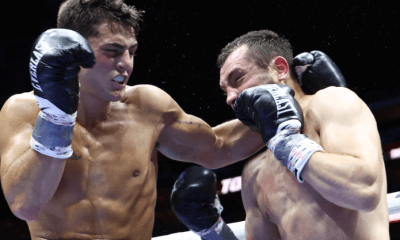
 Featured Articles2 weeks ago
Featured Articles2 weeks agoVito Mielnicki Jr Whitewashes Kamil Gardzielik Before the Home Folks in Newark
-
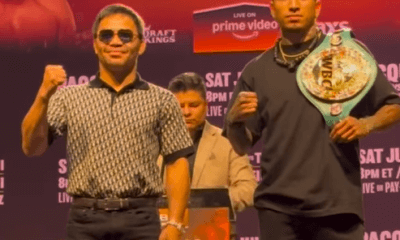
 Featured Articles4 weeks ago
Featured Articles4 weeks agoAvila Perspective, Chap 329: Pacquiao is Back, Fabio in England and More
-
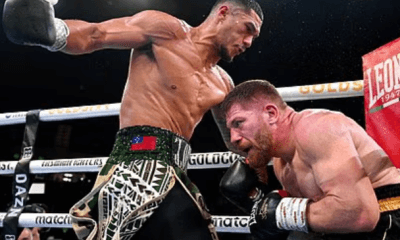
 Featured Articles4 weeks ago
Featured Articles4 weeks agoOpetaia and Nakatani Crush Overmatched Foes, Capping Off a Wild Boxing Weekend
-
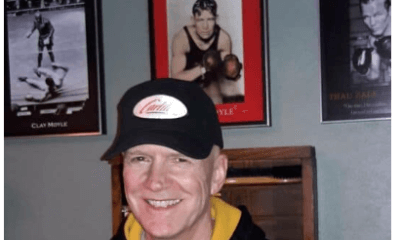
 Featured Articles3 weeks ago
Featured Articles3 weeks agoCatching Up with Clay Moyle Who Talks About His Massive Collection of Boxing Books
-

 Featured Articles4 weeks ago
Featured Articles4 weeks agoFabio Wardley Comes from Behind to KO Justis Huni
-
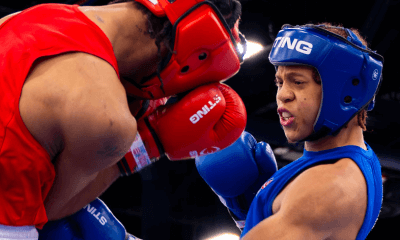
 Featured Articles1 week ago
Featured Articles1 week agoMore Medals for Hawaii’s Patricio Family at the USA Boxing Summer Festival
-
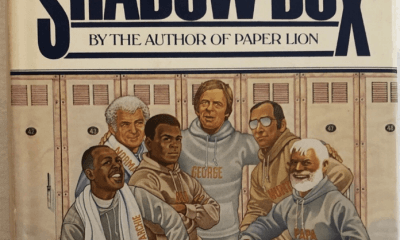
 Featured Articles4 weeks ago
Featured Articles4 weeks agoDelving into ‘Hoopla’ with Notes on Books by George Plimpton and Joyce Carol Oates

